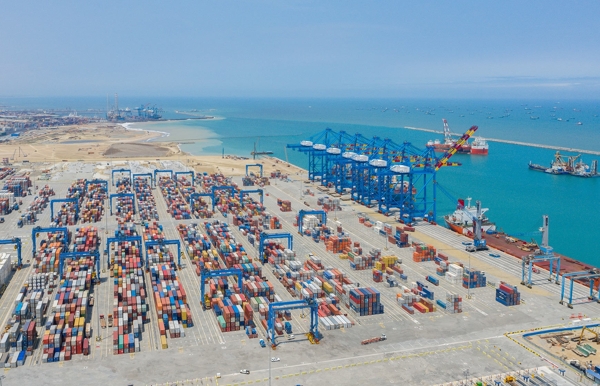
The port landscape of Northern France has undergone a somewhat dramatic shift. As of June 1st 2021, the ports of Le Havre, Rouen and Paris have merged into a single entity, known as HAROPA. The move has long been on the cards for the port grouping, known as the Seine Axis ports but the move has now been made official with the single public company, Haropa now the head of the group.
With the move finalised, the injection of a USD 1.7 billion spending package can now progress, with the greening of the ports a major objective within the wider set of objectives, with a focus on hinterland links also key. The modal split in the port range is heavily skewed towards road haulage, with inland waterway transport handling around 11% of the port range throughput and rail, just 4.5% according to the Journal of Commerce. The move come amidst a series of wider developments in the Northern European port landscape, with the Belgian ports of Zeebrugge and Antwerp recently announcing a merger, a possible change of ownership in Wilhelmshaven and the Port of Rotterdam preparing for the future with the beginning of berth and quay wall development in the Maasvkalte.
In terms of traffic, the Northern French ports lag far behind their Belgian and Dutch counterparts, with the 2020 traffic figures highlighting this. In total, maritime traffic through the ports fell 16.7% in 2020 to 75 million tons, with the number of containers handled falling by 14% to 2.4 million TEU. Furthermore, river activity also fell by a similar amount as the handling of containers on the river fell by 16.5% to 383,000 TEU. In the notes accompanying the figures, it was stressed that container traffic had been heavily impacted by the coronavirus crisis, with the levels of throughput returning to normal levels in the fourth quarter. Overall, the container sector hit a rough patch earlier than others due to the decline in trade with China made itself felt very early on in 2020, at the outset of the covid-19 crisis in Asia. It is worth remembering that trade with China accounts for 22% of traffic through the Port of Le Havre. The picture was more mixed for the other segments, with dry bulk throughput increasing by 5% to 14.5 million tons, including cereals of 8.8 million tons, an increase of 6% year-on-year. Liquid bulk throughput recorded the largest drop, with a decline of 21% year-on-year to 36.3 million tons.
Despite the struggles of the previous year, 2021 should see the start of some potentially transformative projects in the port as around EUR 175 million will be dedicated to the greening of ports, with EUR 71 million heading to the Haropa grouping. In July 2020, the Port of Le Havre and the company LTE (Le Havre Terminal d’Exploitation / Le Havre operating terminal) signed a public service concession agreement for the operation of a multimodal terminal and management of the associated services. This crucial step will inject renewed energy and enable provision of new services. While other developments include:
– The Port of Le Havre is to launch in 2021 its plan for the support of rail and river development (assisting the development of new rail offerings, improvements to quality of service, support for combined transport operators, and so on)
– Starting in the spring of 2021, the entry into service of the Serqueux Gisors line will provide a new freight route, thus reinforcing Port of Le Havre’s rail connections.
– The imminent acquisition by HAROPA of equity in the Mulhouse-Rhine ports is a new opportunity to extend the hinterland of the Seine Axis ports towards Eastern France, Switzerland and even Southern Germany.
In addition to these investments, a further sum of EUR 1.45 billion will help to the port complex towards its strategic 2023 horizon. The strategy includes four pillars, namely customer services, innovation, the ecological transition and human capital, with the overall goal of creating a “port complex on a European scale”. But in the face of developments elsewhere and the accelerating requirement for energy transition projects, the development of the circular economy and the shifting of cargo patterns. Is Haropa well placed to succeed? Or will he established Belgian and Dutch ports continue to dominate.